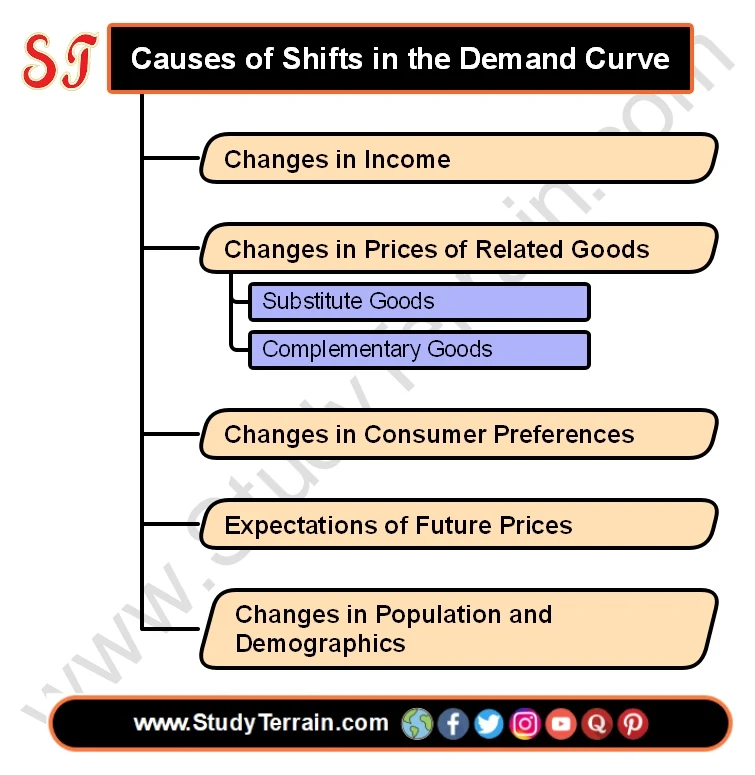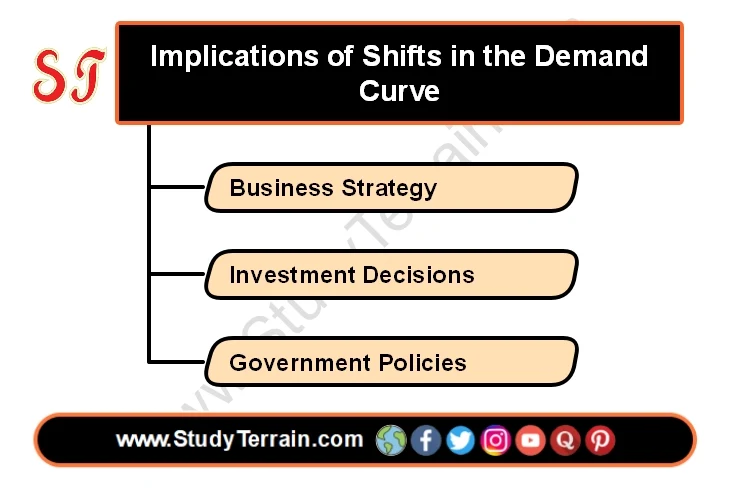In the realm of economics, understanding the demand curve is essential for analyzing consumer behavior and market dynamics. However, the demand curve is not static; it can shift due to various factors influencing consumer preferences and purchasing decisions. In this article, we'll explore what causes shifts in the demand curve and their implications for businesses and the economy.
Table of content(toc)
What is the Demand Curve?
Before delving into shifts, let's briefly revisit what the demand curve represents. The demand curve is a graphical representation of the relationship between the price of a good or service and the quantity demanded by consumers, holding all other factors constant. It typically slopes downwards from left to right, indicating an inverse relationship between price and quantity demanded.
Causes of Shifts in the Demand Curve
 |
| Causes of Shifts in the Demand Curve |
Changes in Income
When consumers' income increases, their purchasing power rises, leading to an increase in demand for most goods and services, particularly normal goods. This shift is depicted by a rightward movement of the demand curve.
Conversely, a decrease in income reduces consumers' ability to spend, resulting in a decrease in demand for most goods and services, particularly inferior goods. This shift is depicted by a leftward movement of the demand curve.
Changes in Prices of Related Goods
Substitute Goods
An increase in the price of a substitute good leads consumers to switch to the original good, causing an increase in demand for the original good. This shift is depicted by a rightward movement of the demand curve.
Complementary Goods
An increase in the price of a complementary good reduces the demand for the original good. This shift is depicted by a leftward movement of the demand curve.
Changes in Consumer Preferences
Changes in tastes, preferences, or fads can influence consumers' willingness to buy certain goods. For example, if there is a growing trend towards healthier eating, demand for organic foods may increase. This shift is depicted by a rightward movement of the demand curve.
Expectations of Future Prices
If consumers expect prices to rise in the future, they may increase their current demand to avoid higher prices later. Conversely, if they expect prices to fall, they may decrease current demand. These shifts are depicted by rightward or leftward movements of the demand curve, respectively.
Changes in Population and Demographics
An increase in population or changes in demographics, such as age distribution or cultural shifts, can alter demand for certain goods and services. For example, an aging population may increase demand for healthcare services. This shift is depicted by a rightward movement of the demand curve.
Implications of Shifts in the Demand Curve
Understanding shifts in the demand curve is crucial for businesses and policymakers as they have several implications:
 |
| Implications of Shifts in the Demand Curve |
Business Strategy
Businesses need to adapt their production levels, pricing strategies, and marketing efforts in response to shifts in demand to maximize profit and remain competitive.
Investment Decisions
Investors need to consider how changes in consumer demand will affect the performance of companies in different sectors before making investment decisions.
Government Policies
Policymakers use knowledge of shifts in demand to formulate effective policies, such as taxation, subsidies, and regulations, to stabilize the economy and promote growth.
Conclusion
Shifts in the demand curve are a natural part of the economic landscape, driven by changes in income, prices of related goods, consumer preferences, expectations, and demographics. Recognizing these shifts and understanding their implications is crucial for businesses and policymakers to make informed decisions and navigate the dynamic world of economics effectively.
For more content visit Managerial Economics



